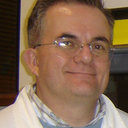Determination of ink photoinitiators in packaged beverages by gas chromatography-mass spectrometry and liquid chromatography-mass spectrometry.
Keywords
Abstract
A new analytical method, using gas chromatography-mass spectrometry (GC/MS) and liquid chromatography-mass spectrometry (LC/MS) techniques, was developed for the determination in packaged food beverages of five ink photoinitiator residues: 2-isopropylthioxanthone (ITX), benzophenone, 2-ethylhexyl-4-dimethylaminobenzoate (EHDAB), 1-hydroxycyclohexyl-1-phenyl ketone (IRGACURE 184) and ethyl-4-dimethylaminobenzoate (EDAB). Samples were extracted from selected beverages (milk, fruit juices and wine) and relative packagings, using n-hexane and dichloromethane, respectively, purified on solid-phase extraction (SPE) silica gel cartridges, and then analyzed in GC/MS and LC/MS. The recovery percentages, obtained spiking the beverage samples at concentrations of 4 and 10 microgl(-1) with a standard mixture of photoinitiators, were in the range 42-108% (milk), 50-84% (wine), and 48-109% (fruit juices). The repeatability of the method was assessed in all cases by the % of correlation value, that was lower than 19%. The lowest limits of detection (LODs) and limits of quantification (LOQs), obtained using GC/MS, were in the range 0.2-1 and 1-5 microgl(-1), respectively. The method was applied to the analysis of forty packaged food beverages (milk, fruit juices and wine samples). The most significant contamination was that of benzophenone, found in all samples in a concentration range of 5-217mugl(-1). Its presence was confirmed by an LC/Atmospheric-Pressure PhotoIonization (APPI)/MS/MS analysis. The photoinitiator (EHDAB) was found in eleven out of forty beverages in a concentration range of 0.13-0.8 microgl(-1). Less important was the ITX contamination, found in three out of forty samples in a range 0.2-0.24 microgl(-1). The work proposes a new method to analyze ink photoinitiator residues in polycoupled carton packaging and in contained food beverages.



